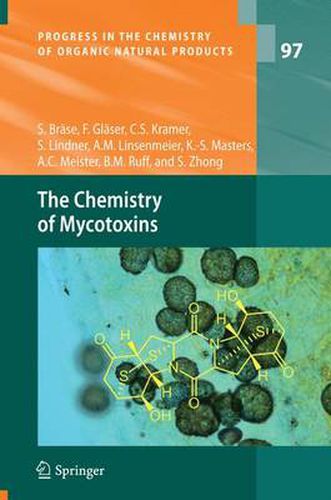Readings Newsletter
Become a Readings Member to make your shopping experience even easier.
Sign in or sign up for free!
You’re not far away from qualifying for FREE standard shipping within Australia
You’ve qualified for FREE standard shipping within Australia
The cart is loading…






This title is printed to order. This book may have been self-published. If so, we cannot guarantee the quality of the content. In the main most books will have gone through the editing process however some may not. We therefore suggest that you be aware of this before ordering this book. If in doubt check either the author or publisher’s details as we are unable to accept any returns unless they are faulty. Please contact us if you have any questions.
The biological activity of mycotoxins ranges from weak and/or sometimes positive effects, such as antibacterial activity (see penicillin derivatives derived from Penicillium strains) to strong mutagenic (e. g. aflatoxins, patulin), carcinogenic (e. g. aflatoxins), teratogenic, neurotoxic (e. g. ochratoxins), nephrotoxic (e. g. fumonisins, citrinin), hepatotoxic, and immunotoxic (e. g. ochratoxins, diketopiperazines) activity.
Nowadays, many laboratories around the world are specialized in the detection of mycotoxins in food products and contaminated material found in housing.
In this volume, a focus on the most important classes of mycotoxins is provided and their chemistry of the last ten years is discussed. In each Section, the individual biological impact is outlined. Sections are arranged according to mycotoxin classes (e. g. aflatoxins) and/or structural classes (e. g. resorcinyl lactones, diketopiperazines). The biology of mycotoxins is also described.
$9.00 standard shipping within Australia
FREE standard shipping within Australia for orders over $100.00
Express & International shipping calculated at checkout
This title is printed to order. This book may have been self-published. If so, we cannot guarantee the quality of the content. In the main most books will have gone through the editing process however some may not. We therefore suggest that you be aware of this before ordering this book. If in doubt check either the author or publisher’s details as we are unable to accept any returns unless they are faulty. Please contact us if you have any questions.
The biological activity of mycotoxins ranges from weak and/or sometimes positive effects, such as antibacterial activity (see penicillin derivatives derived from Penicillium strains) to strong mutagenic (e. g. aflatoxins, patulin), carcinogenic (e. g. aflatoxins), teratogenic, neurotoxic (e. g. ochratoxins), nephrotoxic (e. g. fumonisins, citrinin), hepatotoxic, and immunotoxic (e. g. ochratoxins, diketopiperazines) activity.
Nowadays, many laboratories around the world are specialized in the detection of mycotoxins in food products and contaminated material found in housing.
In this volume, a focus on the most important classes of mycotoxins is provided and their chemistry of the last ten years is discussed. In each Section, the individual biological impact is outlined. Sections are arranged according to mycotoxin classes (e. g. aflatoxins) and/or structural classes (e. g. resorcinyl lactones, diketopiperazines). The biology of mycotoxins is also described.